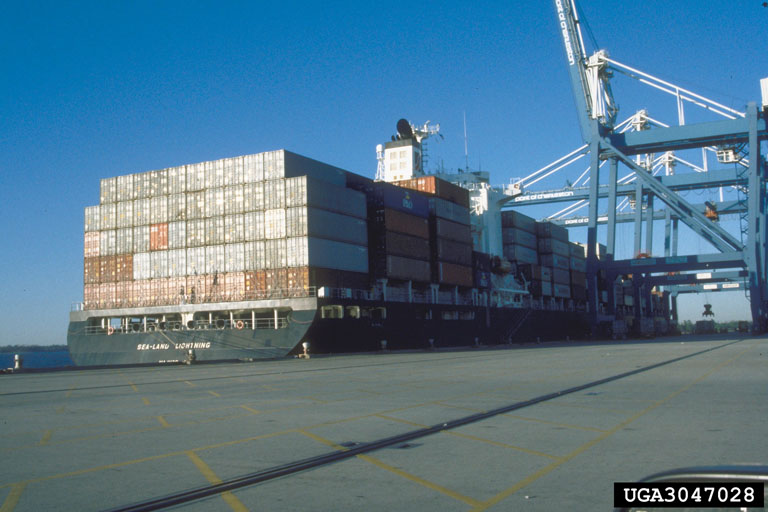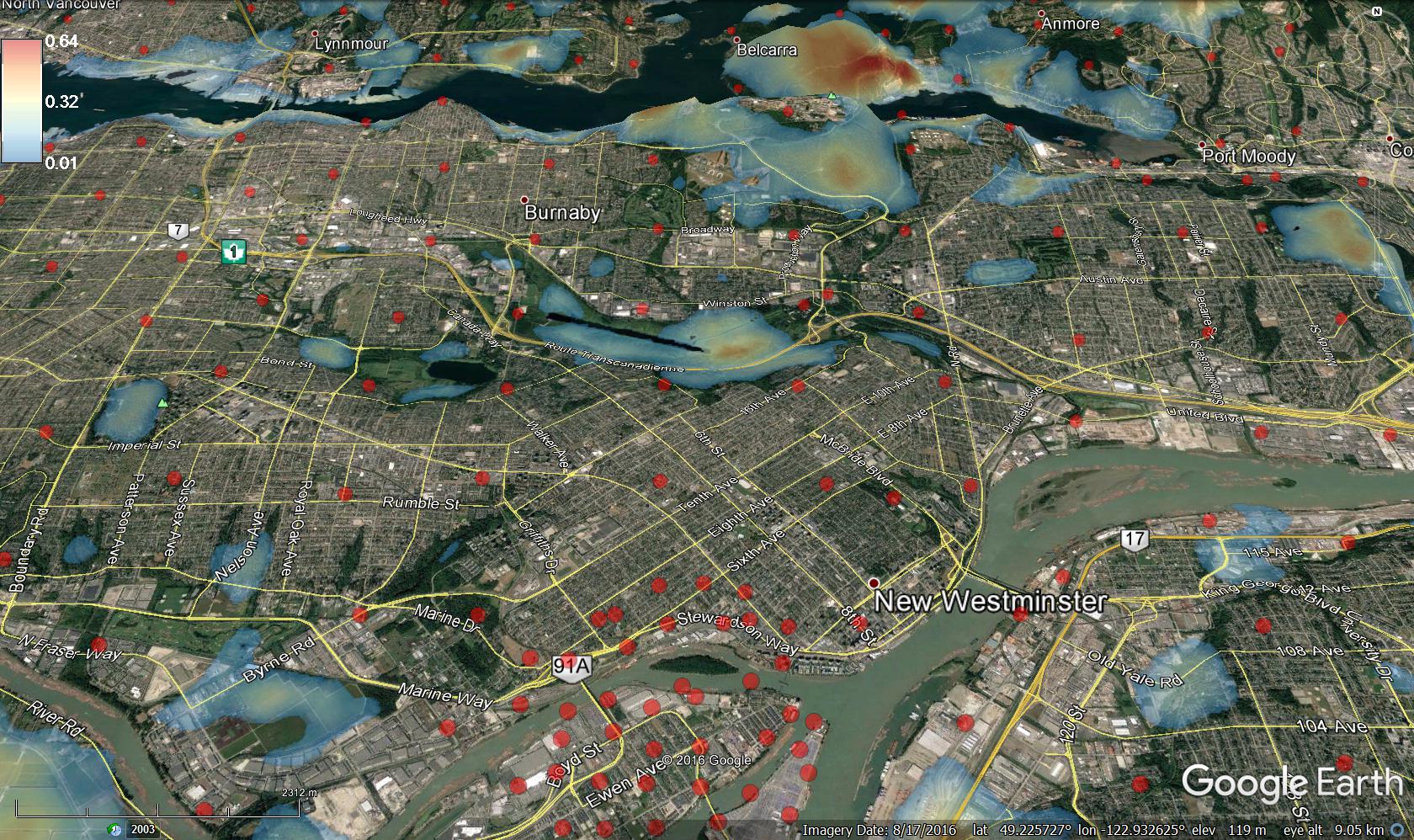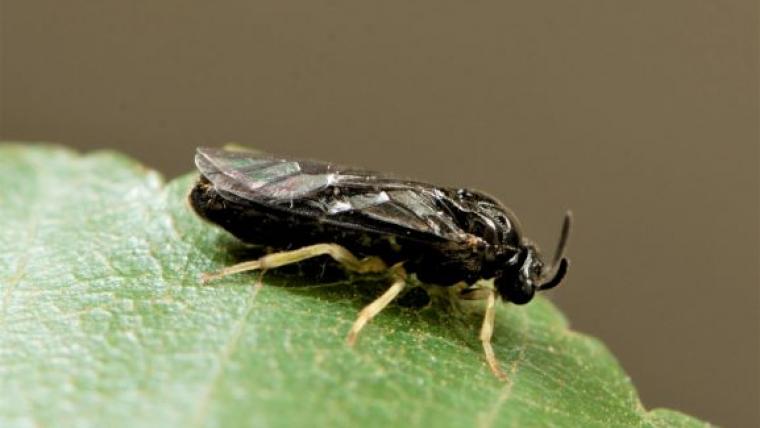Canadian Forest Service research keeping AGM invaders out of Canada
By Lara Van Akker – Pacific Forestry Centre
April 27, 2018

Larger image
Shipping containers waiting to be inspected for possible infestation. Credit: Larry R. Barber, USDA Forest Service, Bugwood.org
Every year, thousands of Asian ships arrive at Canadian ports carrying everything from cars and steel to containers of running shoes. But occasionally, some unintended cargo also arrives in the form of AGM egg masses hiding on the ship’s hulls and in the nooks and crannies of shipping containers. While ship inspections and certification programs run by the Canadian Food Inspection Agency (CFIA) catch most of these forest pest stowaways, the system is not perfect, and every so often some moths make their way to Canadian trees — with potentially devastating results.
The AGM is an invasive insect. With its ability to feed on a wide range of economically important tree species, as well as other important plants, it poses a significant threat to Canada's forests, biodiversity and economy. Ships and cargo, including containers and used vehicles, can carry the moth’s egg masses from China, Japan, North Korea, South Korea and far eastern Russia. Under the right conditions, caterpillars hatch from these egg masses and are dispersed by wind over large distances to find food.

Larger image
Adult female AGM. Credit: John Ghent, bugwood.org
The permanent establishment of AGM populations in Canada would gravely affect Canada’s forests, biodiversity and economy. To counter this impact, Brian Van Hezewijk, research scientist with the Canadian Forest Service, and Kaitlyn Schurmann, research assistant, are developing a new type of risk-mapping system that will help detect these invaders and eradicate populations before they grow to unmanageable sizes.
Traditional risk models produce maps that rapidly become obsolete as conditions change. Using an open-source software platform, Brian and Kaitlyn are building a dynamic risk model to demonstrate how freshly acquired current information — on climatic suitability, location and timing of trap catches, shipping activity, high-resolution land cover data and weather conditions — can be translated into measures of risk and then combined with expert knowledge to generate real-time risk maps and graphs.
The ability to use up-to-date data is key to the new system’s approach. “We actually know quite a lot about managing the AGM risk because of our experience preventing the establishment of the closely related Lymantria dispar dispar moth,” says Brian, “but the situation is always changing.”
That’s because many factors affect the chance that an egg mass laid on a container in Japan, for example, will end up producing a breeding population in Canada. In order to make the right decisions on where to place traps, or when to start an eradication program, layers of complex information need to be assembled and synthesized. Brian explains: “What we are developing is a tool that can rapidly gather all of the relevant information around AGM risk, combine it and present it in an easy-to-understand form.”
Southwestern British Columbia is being used as a demonstration case. The next step will be to meet with experts to refine the model. The final program will be flexible and incorporate new and better resolution data as it becomes available.
The end product will be a highly sophisticated, state-of-the-art tool. Dynamic risk maps and summaries generated by the model will guide the management of the AGM at each stage of the invasion process, from prevention to detection to eradication. The results will aid in refining the protocols for detection and trapping by identifying precisely both where and when the risk is greatest. The traps can then be deployed strategically to best determine the size of an introduced population and how to eradicate it.
By better capturing all the available information and synthesizing it in a reproducible way, the model will facilitate a more evidence-based decision process with many practical applications.

Larger image
Hypothetical risk map for the Burnaby area of B.C.’s Lower Mainland. Yellow-to-orange shading shows higher risk areas determined from several variables — port locations, trapping results, tree cover — and red dots show the location of AGM moth traps.
Page details
- Date modified:


